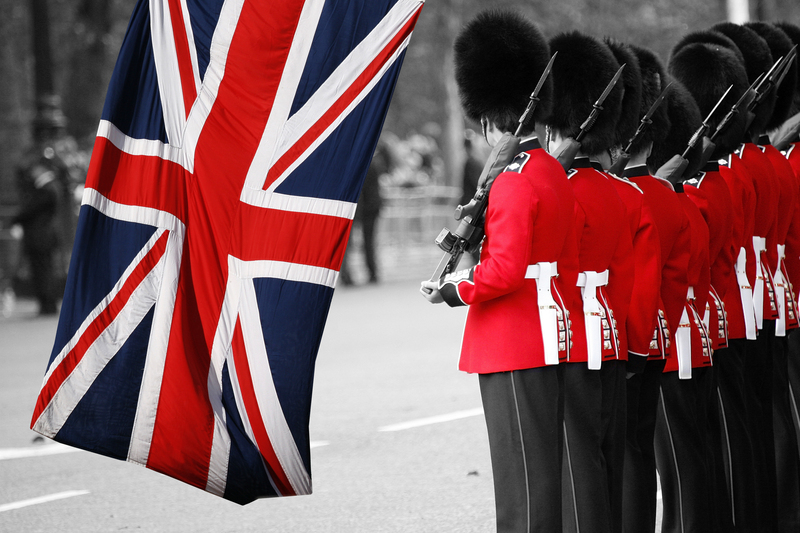A Complete Guide to Relocating Your Bed and Mattress
Moving a bed and mattress can be a daunting task, whether you're shifting across town, relocating to a new city, or simply rearranging rooms in your home. Beds and mattresses are often bulky, heavy, and difficult to maneuver, making their relocation one of the biggest challenges during a move. This complete guide to relocating your bed and mattress is designed to help you prepare effectively, avoid common pitfalls, and ensure your sleeping setup arrives safely at its new destination.
Why Proper Bed and Mattress Relocation Matters
The bed is the centerpiece of most bedrooms, contributing both to aesthetics and comfort. A mattress, in particular, is a significant investment in your health and well-being, affecting sleep quality and overall comfort. Improper relocation can lead to damage, voided warranties, or even reduced lifespan. Ensuring proper handling and transportation of your bed and mattress protects your investment and guarantees you rest well in your new home.
- Prevents costly damage (rips, tears, bent frames)
- Ensures mattress hygiene and cleanliness during the move
- Makes reassembly easier and faster
- Saves time and reduces stress on moving day

Understanding Bed and Mattress Types
Before learning how to move your sleeping setup, it's vital to understand the types of beds and mattresses you may have. Each has unique characteristics that impact the best relocation method.
Common Bed Frame Types
- Platform Bed - Usually constructed with a solid surface for the mattress; often heavy due to size and materials.
- Box Spring Bed - Incorporates a box spring below the mattress; typically easier to disassemble.
- Slat Bed - Utilizes horizontal slats to support the mattress; metal or wood slats may require careful packing.
- Adjustable Bed - Mechanized frames with movable parts; tend to be heavier and more complex to move.
- Bunk Bed or Loft Bed - Multiple bed frames stacked vertically; additional care is needed for safe transport.
Mattress Types and Their Moving Considerations
- Spring Mattress - Can be heavy and unwieldy; springs may get damaged if bent excessively.
- Foam Mattress - Often lighter, but can bend or crease if not moved properly.
- Hybrid Mattress - Combines internal springs and foam; requires balanced handling.
- Latex Mattress - Dense and very heavy; flexibility makes them prone to tears.
- Memory Foam Mattress - Can be compressed but should not be folded or forced.
Essential Tools and Supplies for Moving a Bed and Mattress
Having the right tools makes mattress relocation much safer and more efficient. Gather the following materials before starting:
- Mattress Bag or Cover: Protects mattress from dirt, moisture, and tears.
- Moving Blankets: Covers bed frames to prevent dings and scratches.
- Ratchet Straps or Ropes: Secures mattress during transit.
- Tool Kit: Screwdriver, Allen wrenches, pliers for disassembling the bed frame.
- Bubble Wrap/Plastic Wrap: For delicate or small components.
- Dolly or Moving Cart: Especially helpful for maneuvering heavy frames and mattresses.
- Labeling Materials: Masking tape, markers, or sticker labels for hardware and parts.
Step-by-Step Guide to Relocating Your Bed and Mattress
1. Remove All Bedding and Accessories
Begin by stripping the bed of all pillows, sheets, blankets, mattress protectors, and toppers. Wash and pack them separately to keep them clean and organized. Consider vacuum-sealing bulky bedding to save space during the move.
2. Disassemble the Bed Frame
- Take Pictures During Disassembly: Photograph each step, especially complicated frames. This acts as a reference during reassembly.
- Keep Hardware Together: Place screws, bolts, and small parts in labeled zip-lock bags. Tape them to the corresponding bed component if possible.
- Handle Delicate Parts Carefully: Wrap decorative or fragile pieces in bubble wrap.
- Remove Headboard and Footboard: Unscrew and separate these pieces for easier handling.
- Label Everything: Use masking tape to label each component for fast reassembly.
3. Prepare and Protect the Mattress
Never move a mattress without proper protection! Dust, moisture, and sharp edges can all cause damage. Do the following:
- Insert Into a Mattress Bag: Slide the mattress into a high-quality plastic mattress cover or bag. Seal it tightly.
- Use Handles or Straps: Some mattress bags come with built-in grips, making lifting easier.
- Avoid Folding: Unless the manufacturer allows it, never fold your mattress--especially spring and hybrid models.
- Check for Hidden Damage: Inspect both sides of the mattress before moving to note any existing issues.
4. Move the Bed Frame Components
Use moving blankets to cushion wood or metal components. Stack slats together and tie them with string or straps. Move large sections like headboards upright to reduce breakage risk. If possible, use a dolly for heavy parts or get help from friends or movers.
5. Safely Transport the Mattress
- Keep It Flat or Upright: For short moves, standing the mattress on its side is fine. For longer distances, lay it flat to prevent internal damage.
- Use Professional Movers for Large Mattresses: King and California king sizes may not fit in typical vehicles.
- Secure Placement: Use ratchet straps or ropes to keep the mattress from sliding or falling during transportation.
- Never Place Heavy Objects on Top: Storing items on your mattress during a move can compress and deform it.
6. Reassembling Your Bed in the New Location
- Use Photos as a Reference: Review the pictures you took during disassembly.
- Lay Out All Parts: Unpack and organize everything before beginning.
- Tighten All Hardware: Ensure every screw and bolt is securely fastened to prevent squeaks or instability.
- Check Frame Placement: Position the bed for optimal traffic flow and sunlight, if desired.
- Unpack Mattress and Allow Time to Air: Remove the protective bag, inspect for damage, and let it recover its shape before making the bed.
Tips for Moving a Bed and Mattress Without Professional Movers
Can't hire professional movers? Here are some DIY mattress relocation tips:
- Recruit Enough Help: Most mattresses and frames require at least two people to move safely.
- Clear Pathways: Remove anything that could trip you up--rugs, cords, or clutter.
- Lift Properly: Bend at your knees, keep your back straight, and avoid twisting.
- Use Transport Solutions: Rent a moving van or truck if your vehicle is too small.
- Protect Doors and Walls: Use blankets to cover sharp bed corners or fragile wall finishes.
Common Mistakes to Avoid When Relocating Beds and Mattresses
- Skipping the Mattress Bag: Skipping protection leads to stains and tears.
- Forgetting to Label Hardware: This complicates reassembly and often results in missing pieces.
- Bending or Folding Incompatible Mattresses: Can break internal springs or foam.
- Overloading Your Vehicle: Forces awkward positioning and increases risk of damage.
- Ignoring Mattress Orientation: Storing a mattress improperly during the move may cause it to warp.
Long-Distance Mattress Relocation Tips
When moving beds and mattresses long distances, additional considerations come into play:
- Climate Considerations: Prolonged exposure to heat or rain may damage your mattress; ensure the vehicle is weatherproofed.
- Professional Shipping: Some companies specialize in shipping mattresses--this is often safer and insured.
- Plan Delivery: Ensure there's someone present at your destination to receive and check your items.
- Storage Concerns: If you must store your mattress, choose a climate-controlled unit and always keep it lying flat.
Mattress Hygiene: Cleaning Before and After the Move
An often-overlooked step in mattress relocation is cleaning. Cleaning your mattress before packing it up removes dust mites, sweat, and allergens. After arriving, cleaning again ensures a fresh start in your new home.
Simple Steps to Clean Your Mattress:
- Vacuum Thoroughly: Use a vacuum with an upholstery attachment.
- Spot Clean: Use gentle soap and a damp cloth for stains.
- Deodorize: Sprinkle baking soda on the surface; let it sit for an hour, then vacuum.
- Completely Dry: Allow the mattress to air out before packing or using again.
Recycling or Donating Your Mattress and Bed Frame
Are you considering replacing your bed or mattress? Eco-conscious methods include recycling or donating viable mattresses and bed frames to local charities or recycling centers.
- Check Donation Guidelines: Some charities require mattresses to be in good condition and less than a certain age.
- Locate a Recycling Facility: Many cities offer mattress recycling programs.
- Disassemble for Curbside Pickup: Some waste management services require the bed to be broken down.

Frequently Asked Questions About Bed and Mattress Relocation
How do I move a king-size bed and mattress?
Disassemble the frame fully and protect each part, including the mattress. Use a truck or van with adequate space, and ensure help is on hand for lifting. King mattresses may need to be moved flat to avoid damage.
Can I move a memory foam mattress by folding it?
Only fold a memory foam mattress if the manufacturer explicitly states it is safe to do so. Most are designed to bend slightly but not to be folded, as this can cause creases or cracks in the foam.
Is it worth hiring professional movers for my bed and mattress?
If you have a particularly large, heavy, or valuable bed or mattress, or if you have concerns about moving injury or damage, hiring professionals is recommended. They have experience and the right equipment.
Conclusion: Stress-Free Bed and Mattress Relocation
Relocating your bed and mattress doesn't need to be stressful or back-breaking. With thorough preparation, the right supplies, and a systematic process, you can protect your sleep investment and set up your bedroom quickly in your new space. Whether you're moving across the hall or across the country, use this comprehensive guide to bed and mattress relocation to ensure a safe, efficient, and comfortable transition for your most essential home furnishings.
Happy moving and restful nights in your new home!



